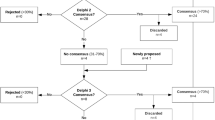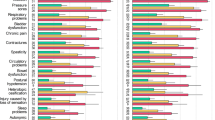Abstract
Study design:
Prospective experimental.
Objectives:
The aim of this study was to develop a quantitative sensory test (QST) that could be used for assessing the level and the density (degree of impairment) of spinal cord injury (SCI) and for monitoring neurological changes in patients with SCI.
Setting:
National Spinal Injuries Centre, Stoke Mandeville Hospital, Buckinghamshire Hospitals NHS Trust, UK.
Methods:
Perceptual threshold to 3 Hz cutaneous electrical stimulation was measured in 30 control subjects and in 45 patients with SCI at American Spinal Injuries Association (ASIA) sensory key points for selected dermatomes between C3 and S2 bilaterally. Electrical perceptual threshold (EPT) was recorded as the lowest ascending stimulus intensity out of three tests at which the subject reported sensation. The level of SCI according to EPT results was established for right and left sides as the most caudal spinal segment at which patient's EPT was within the control range (mean±2 standard deviation (SD)). The level of SCI, according to EPT, was then compared with clinical sensory level derived according to ASIA classification.
Results:
In the control group, EPT depended on the dermatome tested and was lowest for T1 (1.01±0.23 mA, mean±SD) and highest for L5 (3.32±1.14 mA). There was strong correlation between corresponding right and left dermatomes and between repeated assessments. In the SCI group, the level of lesion according to EPT and clinical testing was the same in 43 of the 90 tests (48%). In 37 cases (41%), the EPT level was higher than the clinical level, and in 10 cases (11%), it was lower. Below the level of lesion in incomplete SCI and in the zone of partial preservation in complete SCI, the EPT values in most dermatomes were raised compared with the control group.
Conclusions:
EPT is a simple, reproducible QST that can assess both the level and the density of SCI. It seems to add sensitivity and resolution to the standard clinical testing and could be a useful adjunct in longitudinal monitoring of patients with SCI for research purposes during natural recovery and therapeutic interventions.
Sponsorship:
International Spinal Research Trust (ISRT), UK, Grant CLI001.
Similar content being viewed by others
Log in or create a free account to read this content
Gain free access to this article, as well as selected content from this journal and more on nature.com
or
References
Krassioukov A, Wolfe DL, Hsieh JT, Hayes KC, Durham CE . Quantitative sensory testing in patients with incomplete spinal cord injury. Arch Phys Med Rehabil 1999; 80: 1258–1263.
Hayes KC, Wolfe DL, Hsieth JT, Potter PJ, Krassioukov A, Durham CE . Clinical and electrophysiologic correlates of quantitative sensory testing in patients with incomplete spinal cord injury. Arch Phys Med Rehabil 2002; 83: 1612–1619.
Nicotra A, Ellaway PH . Thermal perception thresholds: assessing the level of human spinal cord injury. Spinal Cord advance online publication, 24 January 2006; doi:10.1038/sj.sc.3101877.
Curt A, Dietz V . Electrophysiological recordings in patients with spinal cord injury: significance for predicting outcome. Spinal Cord 1999; 37: 157–165.
Katims JJ, Naviasky EH, Rendell MS, Ng LK, Bleecker ML . Constant current sine wave transcutaneous nerve stimulation for the evaluation of peripheral neuropathy. Arch Phys Med Rehabil 1987; 68: 210–213.
Rendell MS, Dovgan DJ, Bergman TF, O'Donnell GP, Drobny EP, Katims JJ . Mapping diabetic sensory neuropathy by current perception threshold testing. Diabetes Care 1989; 12: 636–640.
Pitei DL, Watkins PJ, Stevens MJ, Edmonds ME . The value of the Neurometer in assessing diabetic neuropathy by measurement of the current perception threshold. Diabetic Med 1994; 11: 872–876.
Donaghue VM, Giurini JM, Rosenblum BI, Weissman PN, Veves A . Variability in function measurements of three sensory foot nerves in neuropathic diabetic patients. Diabetes Res Clin Pract 1995; 29: 37–42.
Yamashita T, Kanaka K, Sekine M, Takebayashi T, Kawaguchi S, Katahira G . A quantitative analysis of sensory function in lumbar radiculopathy using current perception threshold testing. Spine 2002; 27: 1567–1570.
Quraishi NA, Taherzadeh O, McGregor AH, Hughes SP, Anand P . Correlation of nerve root pain with dermatomal sensory threshold and back pain with spinal movement in single level lumbar spondylosis. J Bone Joint Surg Br 2004; 86: 74–80.
Chu NS . Current perception thresholds in toe-to-digit transplantation and digit-to-digit replantation. Muscle Nerve 1996; 19: 183–186.
Davey NJ, Nowicky AV, Zaman R . Somatotopy of perceptual threshold to cutaneous electrical stimulation in man. Exp Physiol 2001; 86: 127–130.
Ellaway PH et al. Towards improved clinical and physiological assessments of recovery in spinal cord injury: a clinical initiative. Spinal Cord 2004; 42: 325–337.
Maynard FM et al. International standards for neurological and functional classification of spinal cord injury. American spinal injury association. Spinal Cord 1997; 35: 266–274.
American Spinal Injury Association. International Standards for Neurological Classification of Spinal Cord Injury, Revised 2002. American Spinal Injury Association: Chicago, IL 2002.
Takekuma K, Ando F, Niino N, Shimokata H . Age and gender differences in skin sensory threshold assessed by current perception in community-dwelling Japanese. J Epidemiol 2000; 10: S33–S38.
Belci M, Catley M, Husain M, Frankel HL, Davey NJ . Magnetic brain stimulation can improve clinical outcome in incomplete spinal cord injured patients. Spinal Cord 2004; 42: 417–419.
Acknowledgements
The Clinical Initiative Study was funded by The International Spinal Research Trust, UK, Grant CLI001. We thank all the patient and control volunteers for their generous participation in the study, the members of the Clinical Initiative team for their contribution to the work and the staff at the National Spinal Injuries Centre, Stoke Mandeville Hospital for their help during the study.
Author information
Authors and Affiliations
Rights and permissions
About this article
Cite this article
Savic, G., Bergström, E., Frankel, H. et al. Perceptual threshold to cutaneous electrical stimulation in patients with spinal cord injury. Spinal Cord 44, 560–566 (2006). https://doi.org/10.1038/sj.sc.3101921
Published:
Issue date:
DOI: https://doi.org/10.1038/sj.sc.3101921
Keywords
This article is cited by
-
Quantitative electrophysiological assessments as predictive markers of lower limb motor recovery after spinal cord injury: a pilot study with an adaptive trial design
Spinal Cord Series and Cases (2022)
-
Retraining walking over ground in a powered exoskeleton after spinal cord injury: a prospective cohort study to examine functional gains and neuroplasticity
Journal of NeuroEngineering and Rehabilitation (2019)
-
Application of electrophysiological measures in spinal cord injury clinical trials: a narrative review
Spinal Cord (2019)
-
Discrepancies between clinical assessments of sensory function and electrical perceptual thresholds after incomplete chronic cervical spinal cord injury
Spinal Cord (2016)
-
Reliability of the electrical perceptual threshold and Semmes-Weinstein monofilament tests of cutaneous sensibility
Spinal Cord (2013)



